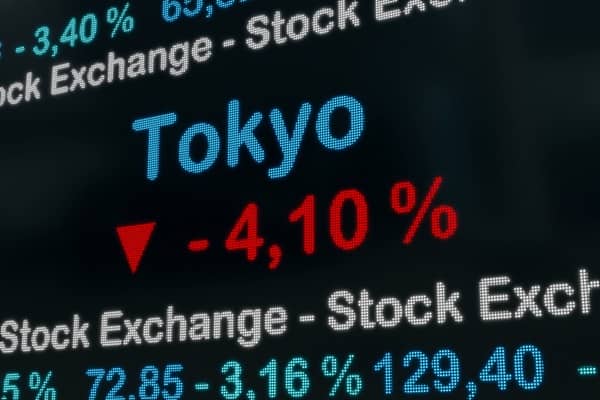Bussiness
USD/JPY forecast: Yen continues to strengthen – London Business News | Londonlovesbusiness.com

The USD/JPY pair is still under some selling pressure at 152.36 on Thursday, its lowest level in three months.
The increasing expectations that the Bank of Japan will raise interest rates next week provide some support for the Japanese yen at present. The U.S. GDP for Q2 will be crucial for the pair’s trading today.
The Bank of Japan is also likely to discuss whether to raise interest rates again next week and reveal a plan to cut bond purchases by about half in the coming years.
This may be since, ahead of the Bank of Japan’s interest rate decision next week, markets are pricing in the risk of a rate hike now rather than in September. Additionally, potential foreign exchange market interventions by Japanese authorities could continue to weigh on the pair.
In my view, if the Bank of Japan raises interest rates at its next meeting, it will prompt short sellers to close their positions and buy yen. Moreover, the Japanese government’s plans to reduce its bond purchases aim to calm massive monetary stimulus.
This comes especially after Japanese Finance Minister Shunichi Suzuki and senior currency diplomat Masato Kanda avoided commenting on foreign exchange measures, with the USD/JPY pair dropping to its lowest level in over two months.
I believe the U.S. dollar may gain further strength after recent U.S. PMI data showed faster growth in private sector activity for July, reinforcing U.S. economic resilience despite higher interest rates. This data gives the Federal Reserve more leeway to maintain its restrictive policy stance if inflation shows no signs of easing.
Investors will closely watch U.S. annual GDP data (Q2) on Thursday and Personal Consumption Expenditures (PCE) inflation data on Friday. These reports are expected to provide new insights into U.S. economic conditions and the potential for a soft landing that the Fed talks about.
Notably, the Nikkei 225 fell by 2.5% to below 38,200 points, as Japanese stocks hit a five-week low with a sharp decline in technology shares. This decline followed disappointing quarterly results from U.S. tech giants Tesla and Alphabet.
The Corporate Services Price Index (CSPI) in Japan also rose by 3.0% year-on-year in June, up from the previous increase of 2.7%. In my view, this represents the fastest pace in over nine years, indicating rising inflationary pressures.
In my opinion, Japan’s economic recovery and rising inflation rates support the strength of the Japanese stock market, which is one of the key factors supporting the yen. Therefore, I expect the Bank of Japan will not raise interest rates at its meeting next week.
In the U.S., the global services PMI by Standard & Poor’s rose to 56.0 in July, the highest reading in 28 months, and the composite PMI increased to 55.0 from the previous reading of 54.8, marking the highest level since April 2022. This, according to my expectations, indicates sustainable growth over the past eighteen months despite data variability.
The Japan GIBON manufacturing PMI unexpectedly fell to 49.2 in July from 50.0 the previous month, below market expectations of 50.5 and indicating the first decline in factory activity since April, according to preliminary estimates. In contrast, the services PMI rose to 53.9 in July from a final reading of 49.4 the previous month. This marks the sixth increase in the services sector this year and the fastest pace since April.
To maintain the yen’s current strength, I believe the Japanese government should clarify its monetary policy plan by gradually raising interest rates. This would support Japan’s transition to a strong growth economy. Meanwhile, Harris has now become the presumptive Democratic nominee for the upcoming U.S. presidential election in November, which could put some pressure on the dollar. Thus, the USD/JPY pair may continue to decline.
Technical analysis of (USD/JPY) prices
The USD/JPY pair has broken through key support levels. This indicates further losses, as the pair has shifted to a bearish trend after clearly breaking through the Ichimoku cloud, pushing it to test lower levels. The momentum remains in favour of selling.
The Relative Strength Index (RSI) also shows that the price is nearing oversold conditions if the pair drops to the next support area at 151.86. If this level is breached, the pair may target the support level of October 21, 2022, at 151.94. However, if the USD/JPY pair rebounds and regains the 156.00 level above the Ichimoku cloud, it will return to an upward trend, although this scenario is weaker.
USD/JPY – Prices Chart –-XS.com
On the other hand, the USD/JPY pair is trading at 152.72 during the early hours of Thursday. Daily chart analysis shows that the pair has broken through the descending channel, and the 14-day Relative Strength Index (RSI) signal line is below 30, indicating oversold conditions and potential short-term recovery.
The USD/JPY pair may find significant support near the May low of 151.86. Further support may be found at the key level of 151.00.
In an optimistic scenario, the pair may test the lower boundary of the descending channel again around the psychological level of 154.00. A return to within the descending channel could weaken the bearish momentum and support the pair in testing resistance at the 9-day exponential moving average at 155.90, followed by the upper boundary of the descending channel around 156.80 in the medium term, though this scenario is less likely.
Support levels: 152.30 – 151.86 – 151.94
Resistance levels: 154.80 – 156.00 – 157.50








